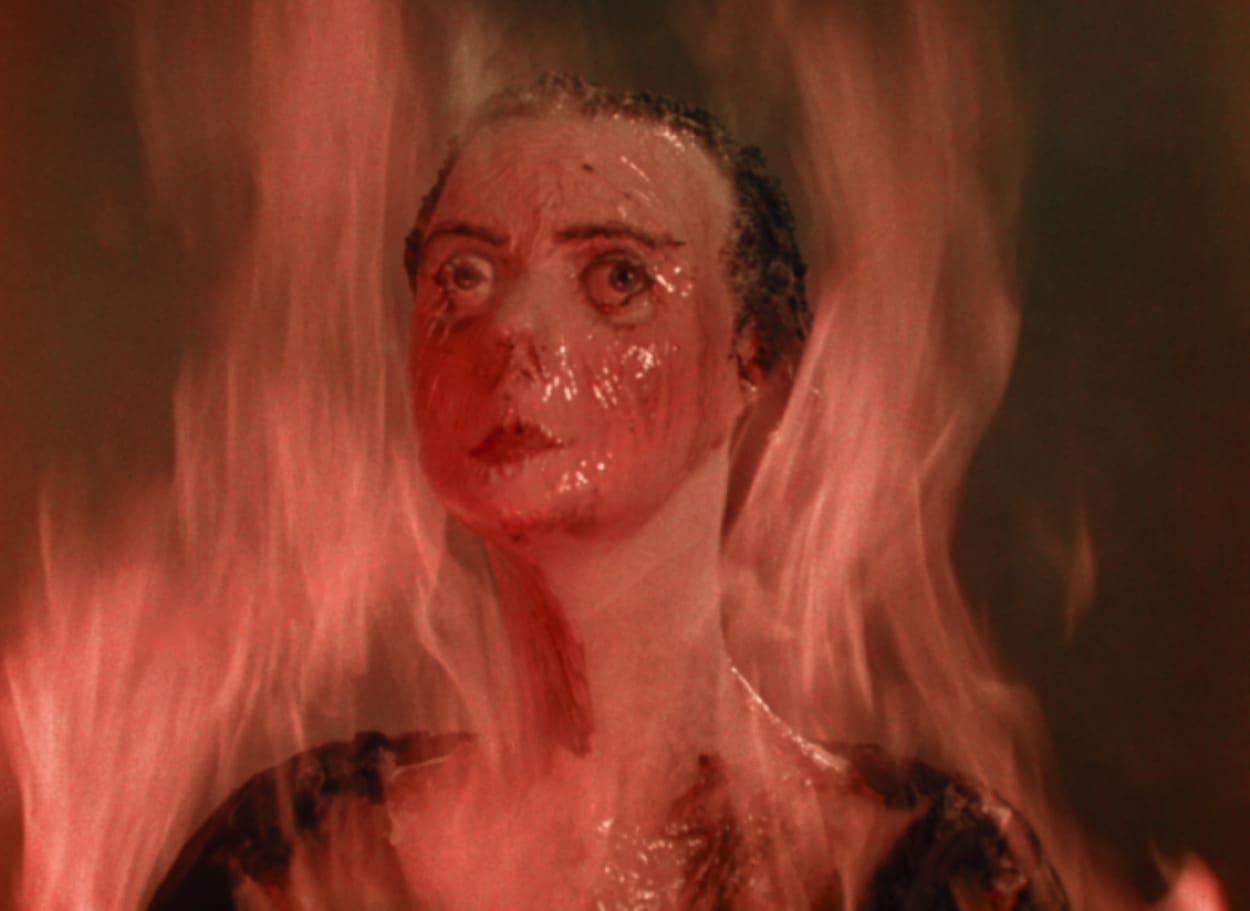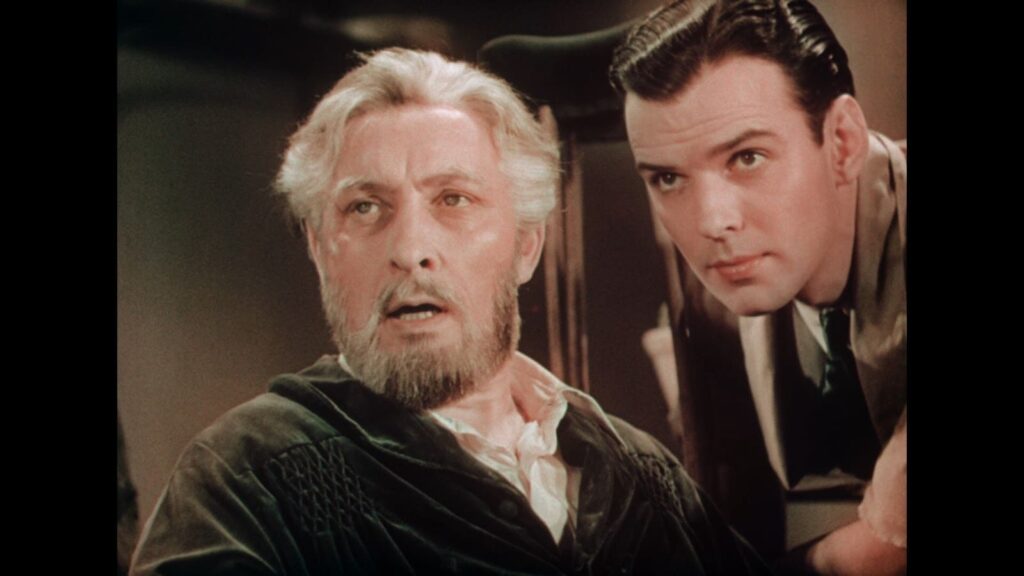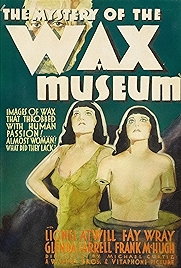Screwball but not comedy, 1933’s Mystery of the Wax Museum is less well known than its remake, 1953’s House of Wax, but more fascinating in many respects, particularly in its portrayal of liberated young women making their way in the world. There’s sex and drugs too, though you wouldn’t bother with it for those.
The Hays Code, which cleaned up American movies starting around 1934, wasn’t expressly designed to put women back in their box (discuss) but it did it anyway. The ostensible star of this pre-Code film is eminent stage actor Lionel Atwill, as the driven creator of wax effigies of great historical figures whose London museum burns down in the film’s opening minutes.
But the film’s real star is Glenda Farrell, who comes into her own after Ivan Igor (Atwill) relocates to New York and sets about re-opening his London Wax Museum in the Big Apple.
Glenda’s reporter Florence is a screwball comedy gal, fast of lip, blithe of spirit, eye for the main chance, who we first meet being fired by her editor Jim (Frank McHugh) for being “ornamental and conceited about it”, but who then talks herself back into her job by promising Jim a big scoop.
All she needs is a story, and soon thinks she has one – a young woman dead of a drug overdose. Suicide or murder? It’s impossible to say, because the body has been stolen from the morgue, leaving murder suspect number one, rich playboy George Winton (Gavin Gordon), languishing in the cells with little immediate hope of release.
We guess, because we have seen House of Wax perhaps, or because we’ve noticed how lifelike Ivan Igor’s waxworks in London looked (in many shots they are real people), that there’s a bit of body-snatching going on, and that someone is turning human corpses into effigies somewhere in the bowels of Igor’s new museum.
While Florence joins the dots, regularly reporting back to Jim for more tongue-lashings – she gives as good as she gets and these are the film’s best scenes – Igor has copped a look at Florence’s room-mate, Charlotte, another bright young thing going places, and been overcome by her resemblance to the Marie Antoinette of his imagination. The stage is set for Fay Wray, who plays Charlotte, to start earning her name as the first “Queen of Scream”, a title confirmed later the same year with King Kong.
Like House of Wax there’s a visual gimmick. The 1953 remake had 3D; this 1933 original has two-strip Technicolor, a process that delivered greens and reds but no blues. Things can get a bit overly pink but the weird colour palette works in the movie’s favour – the fleshy hues of the waxworks, the overall slightly sickly green colour matching the queasy mood. Director Michael Curtiz was bound for glory with the string of films he’d make with Errol Flynn later in the decade and he’s the model of slick competence here, keeping the whole thing moving along like the romantic comedy it faintly is – Florence and rich guy George, or Florence and editor Jim maybe, while Charlotte gets her own stalkerish inverted romance of sorts with the never less than macabre Ivan Igor (pronounced Ee-van Eye-gor).
For giggles, and demonstrating his origins in Europe, Budapest-born Curtiz gives us a few reminders of Expressionism with wonky angles, forced perspectives and impossible staircases but for the most part sees it as his job to keep the energy up, much as André De Toth, a fellow Hungarian, would in House of Wax.
It’s a great looking film and the colour version was considered lost until Jack Warner’s own personal print was discovered in the early 1970s. It is the source for all subsequent VHS/DVD/Blu-ray/streaming versions, and for the 2019 4K restoration paid for by the George Lucas Family Foundation. It’s very, very good, and the film is well worth the attention.
Mystery of the Wax Museum – Watch it/buy it at Amazon
I am an Amazon affiliate
© Steve Morrissey 2023


